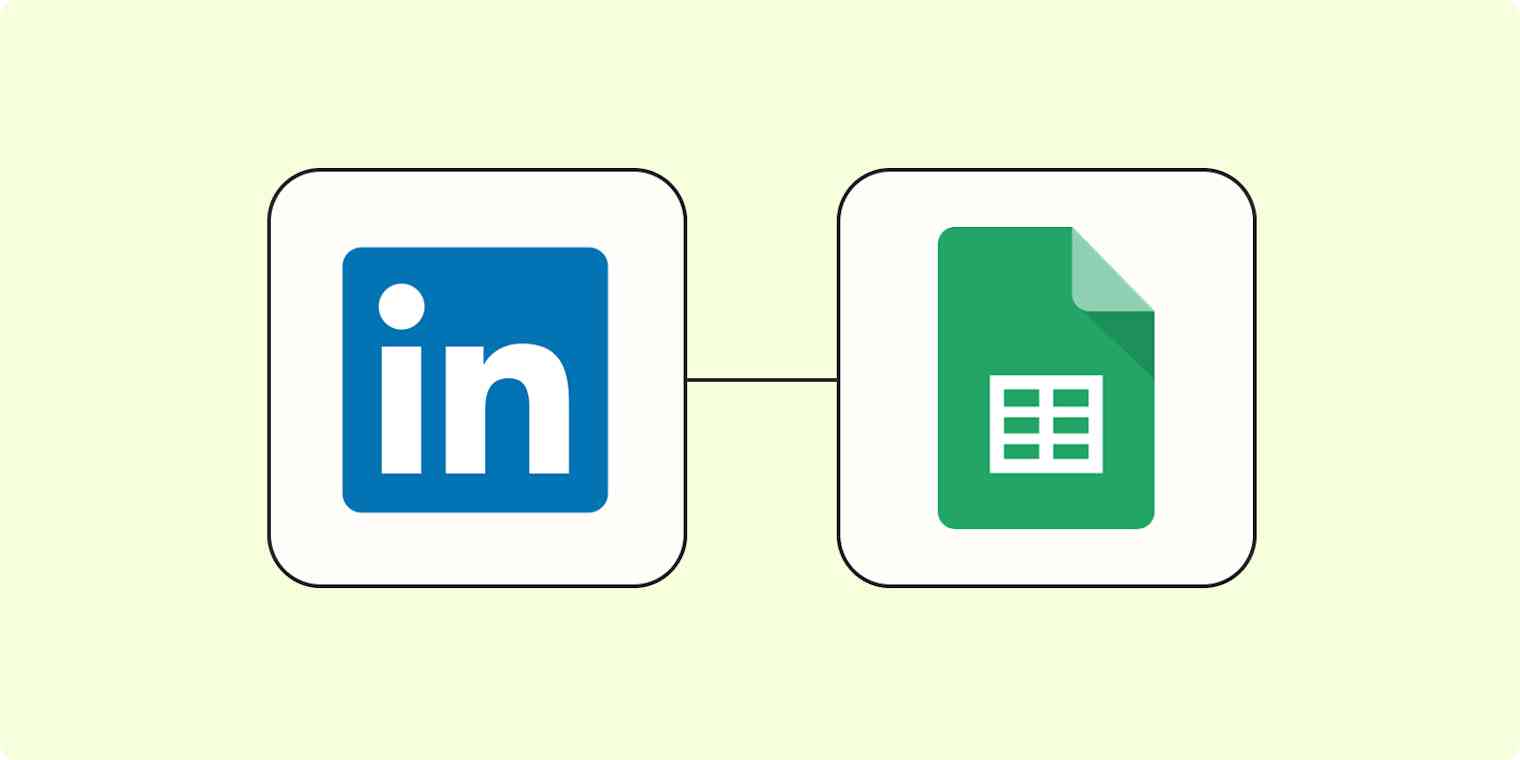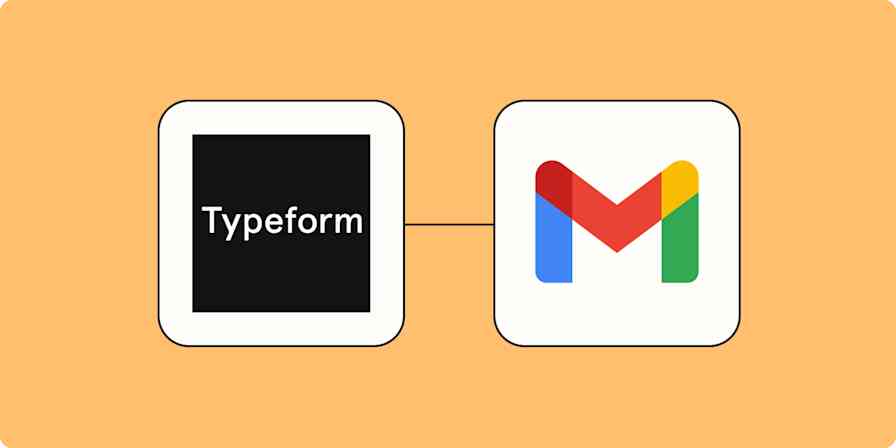LinkedIn is not only a great place for professional outreach, but it's also a gold mine for professional lead gen. Because LinkedIn has such rich data for professionals, you can run really specific campaigns, increasing your conversions and reducing your budget.
But all those leads sitting in LinkedIn Campaign Manager don't help you much if you don't do anything with them. If you want to more easily slice and dice your lead data or share it with other teams, you might want to drop it into a spreadsheet. With a Zap—Zapier's automated workflows—you can add new leads from LinkedIn Ads to Google Sheets automatically as soon as they come in. Here's how.
New to Zapier? It's workflow automation software that lets you focus on what matters. Combine user interfaces, data tables, and logic with 6,000+ apps to build and automate anything you can imagine. Sign up for free.
Before you begin
After setting up your LinkedIn campaign, take some time to create a Google Sheets spreadsheet that will mirror the data that you'll collect from LinkedIn.
For your Zap to work correctly, you'll need to make sure to add a header row to your spreadsheet with columns for each LinkedIn field you want to record in Google Sheets. In our example, we're running a simple lead gen campaign, so all we need are three columns titled First Name, Last Name, and Email. Your structure might be different based on the data you're collecting.
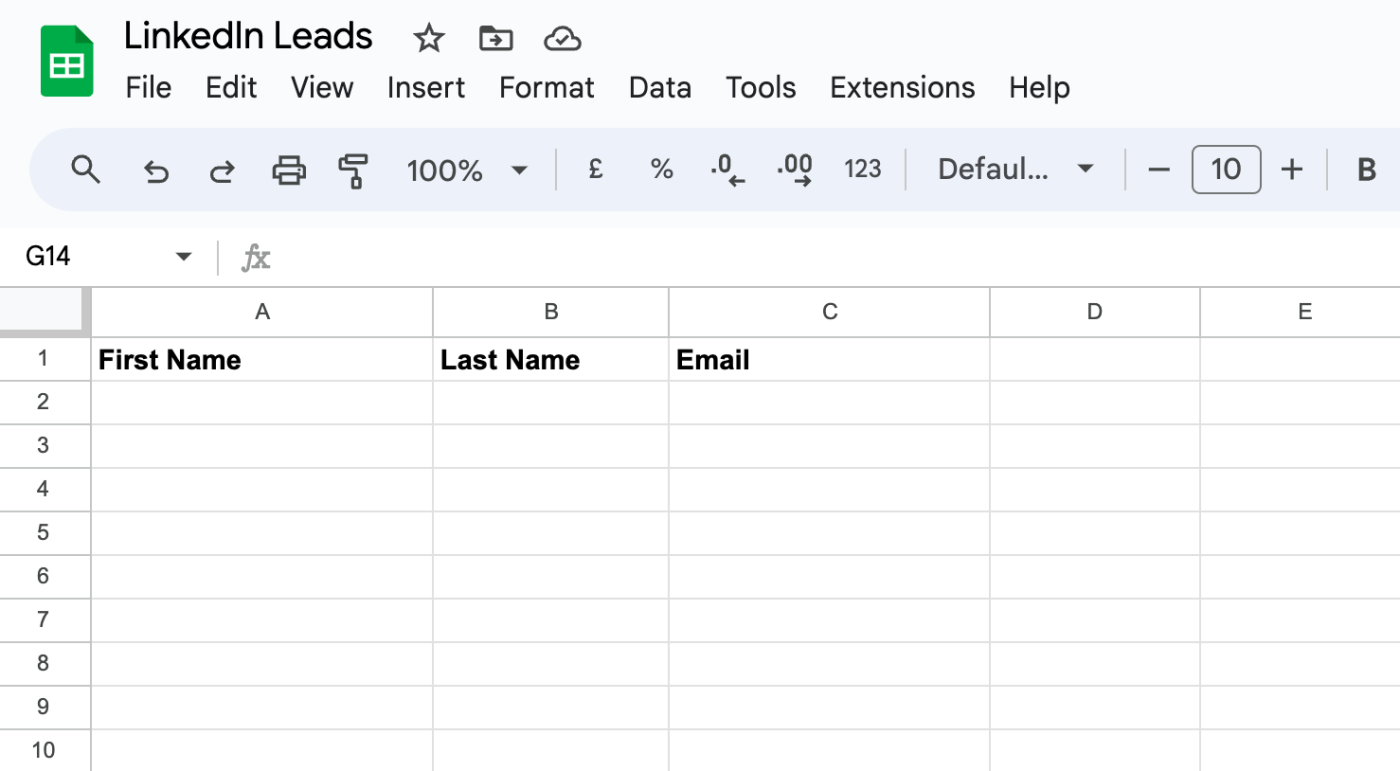
How to add new leads in LinkedIn Ads to Google Sheets rows
Now, you're ready to set up your workflow. Zapier lets you create automated workflows called Zaps, which send your information from one app to another. You can create your own Zap from scratch without any coding knowledge, but we also offer quick templates to get you started.
If you'd like to start with a template, click on it to go to the Zap editor. You'll need to create a Zapier account if you don't already have one. Then, follow the directions below to set up your Zap.
Add new leads in LinkedIn Ads to Google Sheets rows
Set up your LinkedIn Ads trigger
First, set up your trigger—the event that starts your Zap. If you're using the Zap template, the trigger app and event will already be selected for you. Otherwise, search for and select LinkedIn Ads as the trigger app and New Lead Gen Form Response as the trigger event. Click Continue.

Next, connect your LinkedIn Ads account, if you haven't already, then click Continue.
Now it's time to customize your trigger step. Select the Account where you're running the LinkedIn campaign, and next select the Lead Form for collecting the data. Then, click Continue.

Next, test your Zap. Before testing, make sure you have at least one form response—you'll need this to set up the rest of your Zap. If this is a new form, add a test entry now.
Once you have at least one response, click Test trigger. Choose the sample data you'd like to use, then click Continue with selected record.
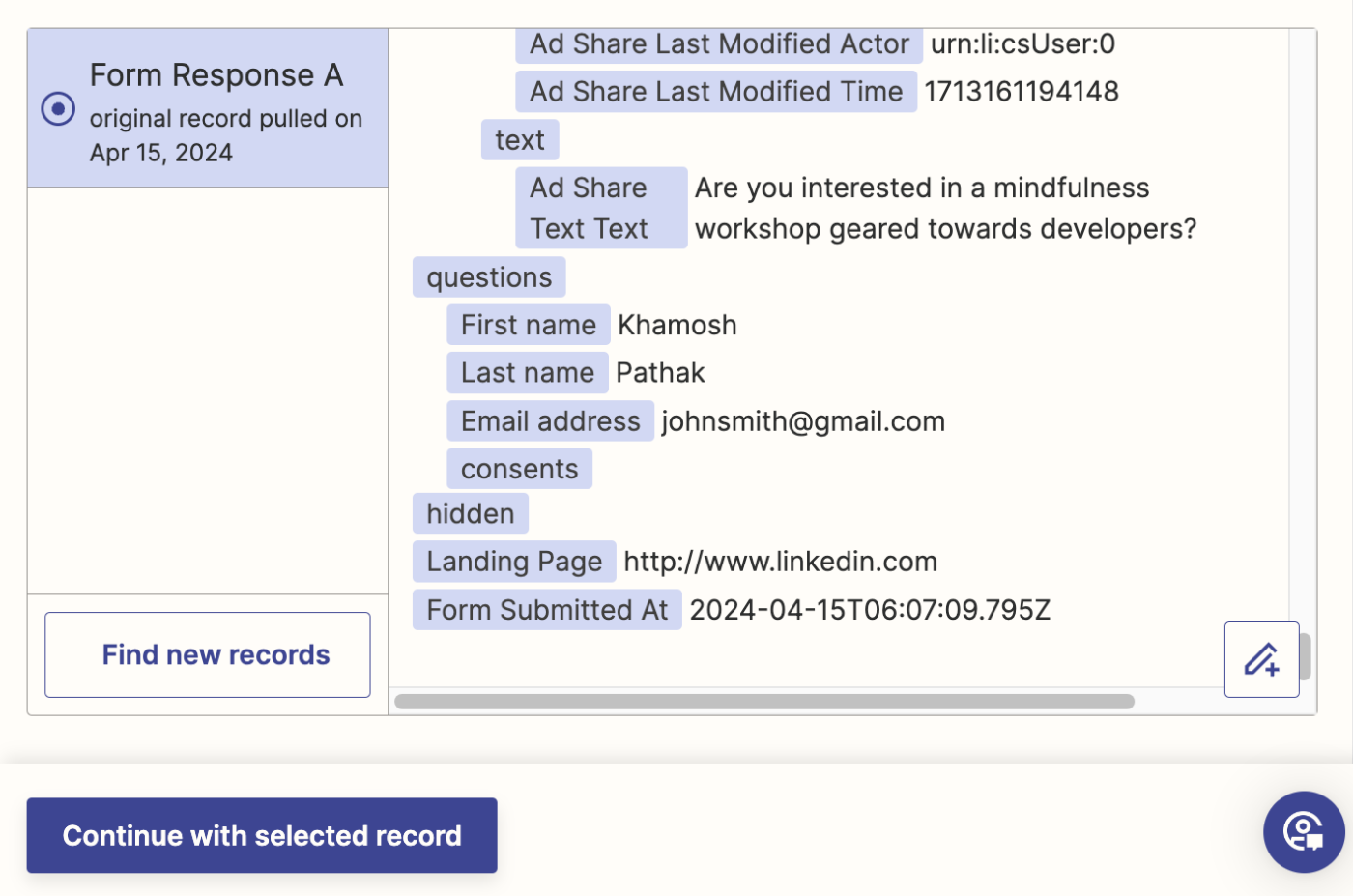
Set up your Google Sheets action
Now it's time to set up the action—the event your Zap will perform once it's triggered. If you're using the Zap template, these will already be selected for you. Otherwise, search for and select Google Sheets as your action app and Create Spreadsheet Row as your action event. Click Continue.

Connect your Google Sheets account, if you haven't already, then click Continue.
Now, it's time to customize your action step. First, select the drive where your Google Sheet is stored in the Drive field. Then, select the spreadsheet you created in the Spreadsheet field. And finally, choose the appropriate Worksheet (by default, it's "Sheet1").
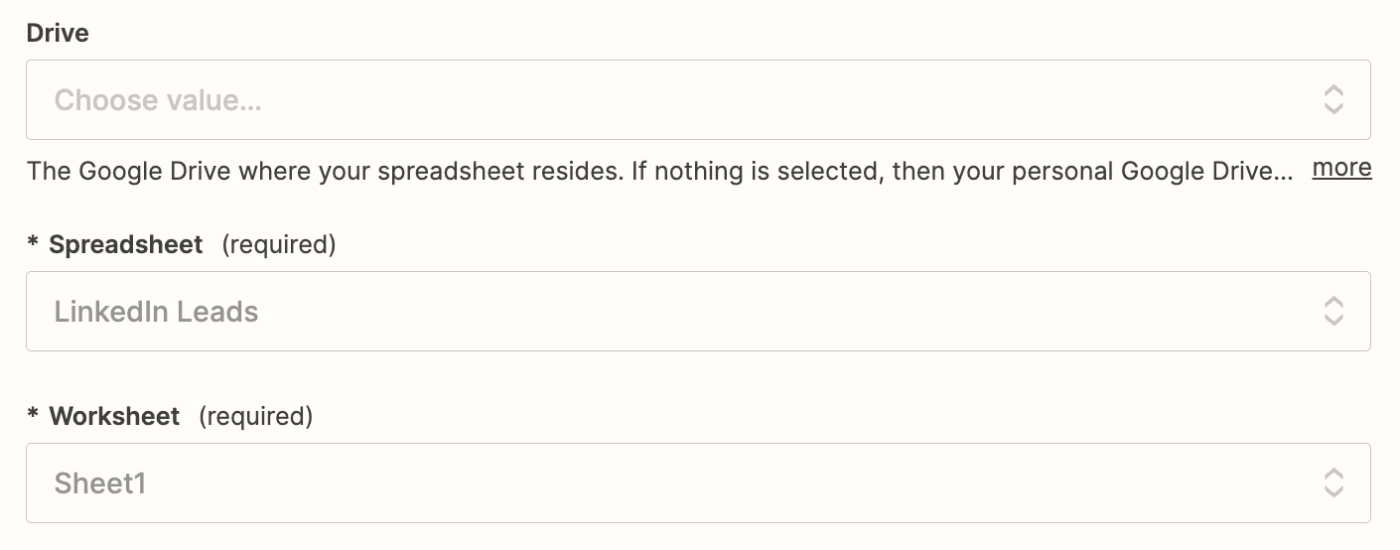
Zapier will automatically pull in the column headings from your spreadsheet. To map the lead form responses to your Google Sheets rows, just click in the field and select the appropriate data from the dropdown.
As you can see, we mapped the First name response from LinkedIn to the First Name field, and so on.
Once you're done, click Continue.
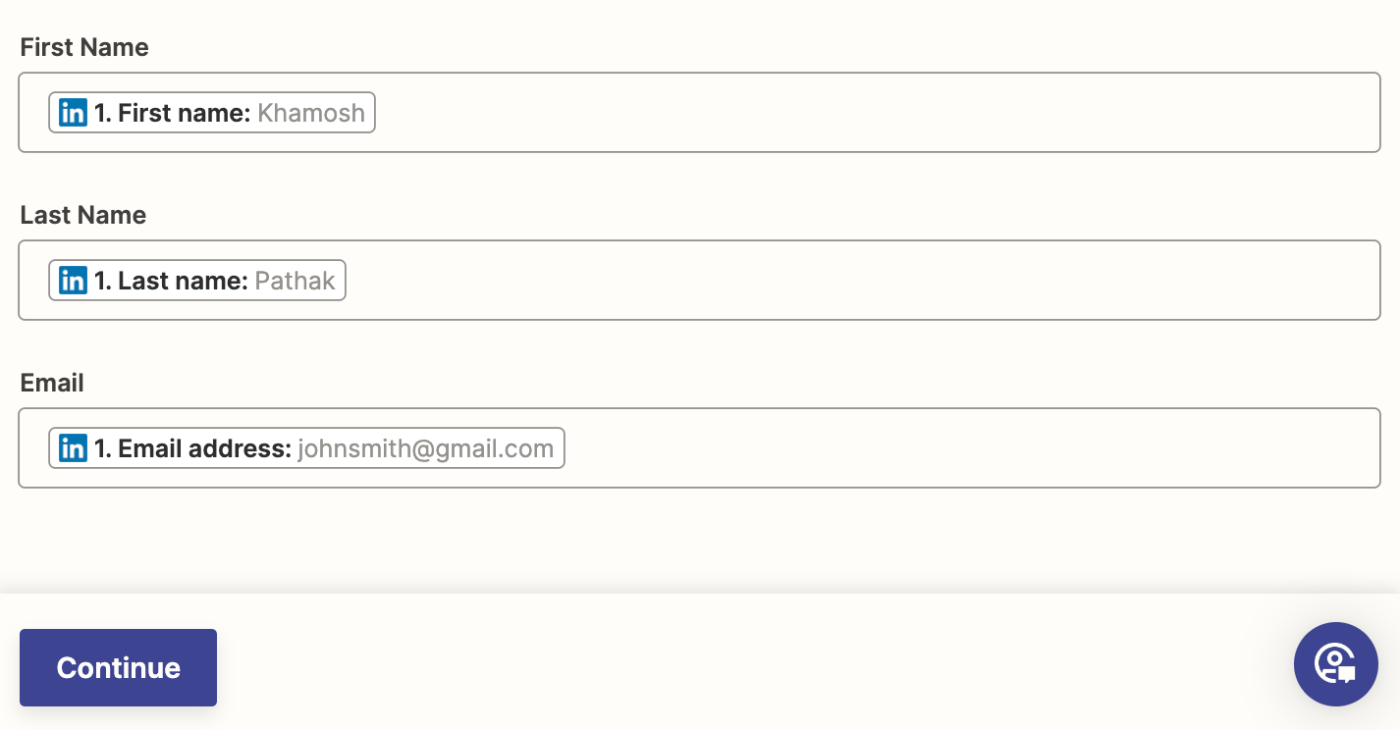
Next, click Test step to test your Zap. Zapier will send the sample data to your Google Sheets spreadsheet. Open the spreadsheet to check if everything looks good.
Here are our results:
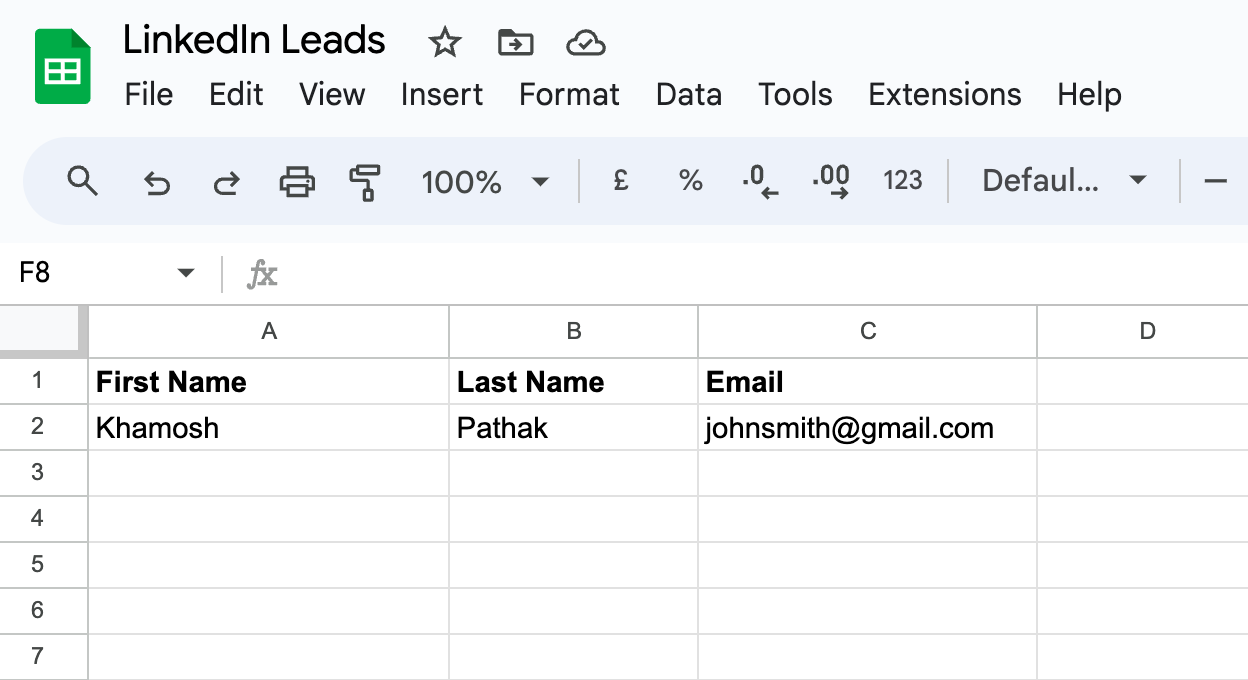
And that's a win! If everything looks, you're ready to use your Zap. Now, every time you get a new lead from LinkedIn Ads, it will automatically show up in Google Sheets!
Add new leads in LinkedIn Ads to Google Sheets rows
Looking for other ways to automate LinkedIn? Try these workflows:
